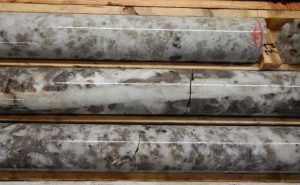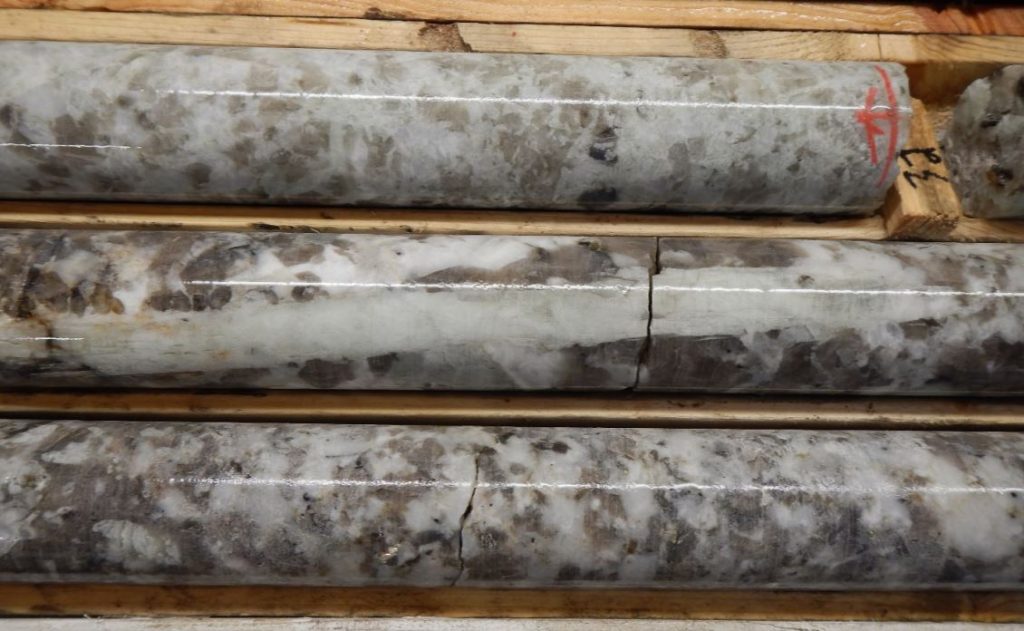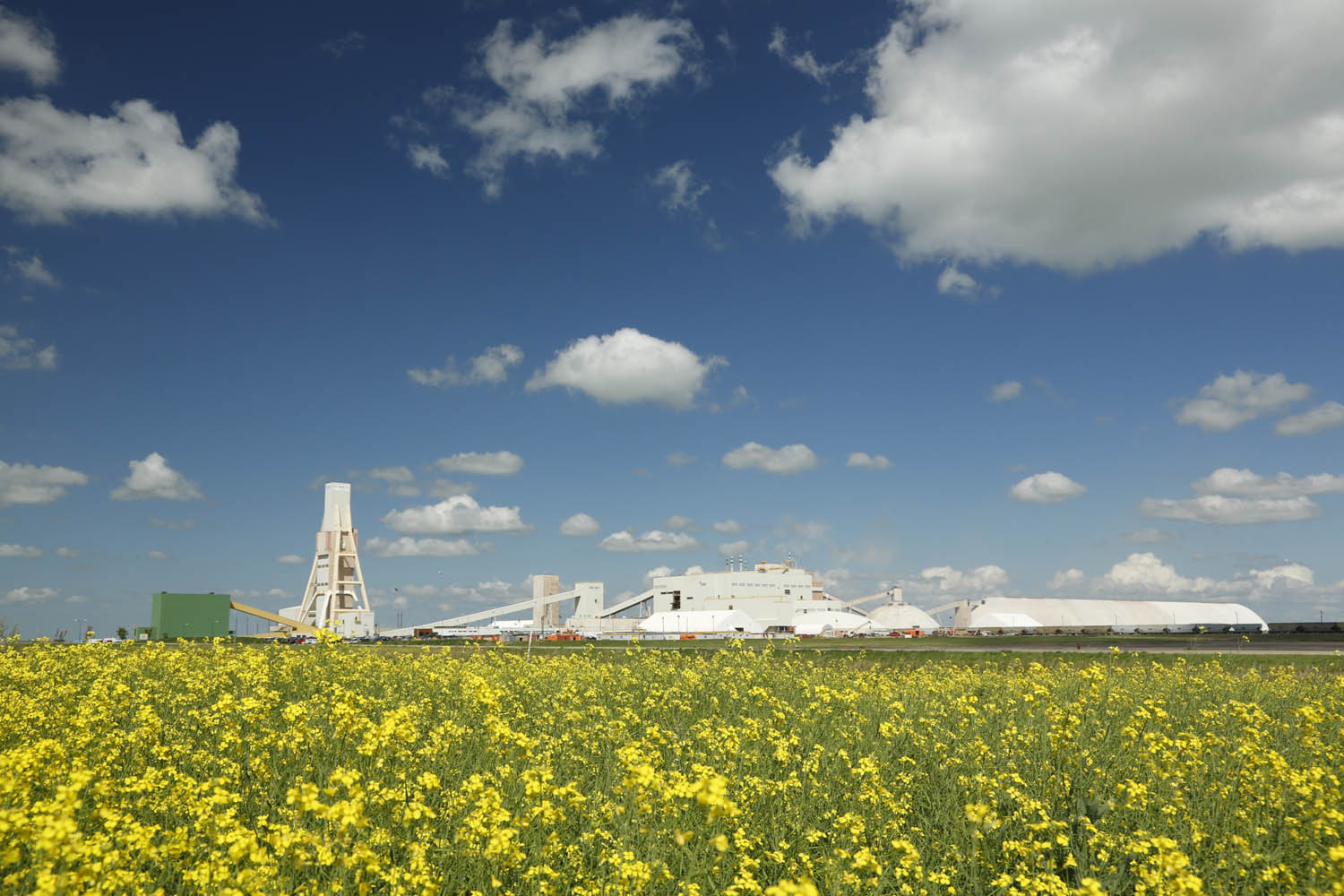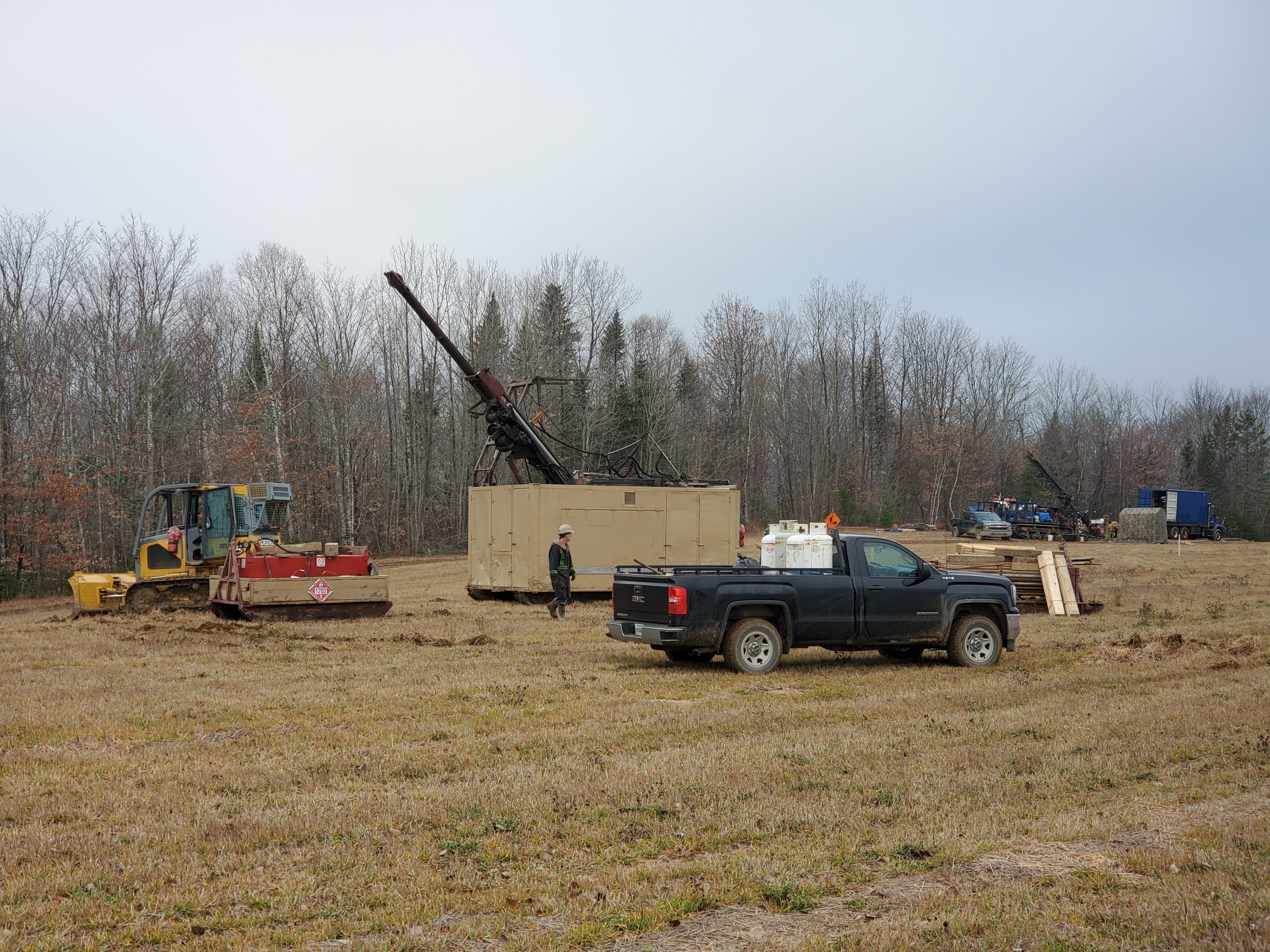[caption id="attachment_1003723626" align="aligncenter" width="529"]
 From the Main dyke at Case Lake, a 42-cm long spodumene blade. (Image: Power Metals)
From the Main dyke at Case Lake, a 42-cm long spodumene blade. (Image: Power Metals)[/caption]
ONTARIO –
Power Metals Corp. of Vancouver says its recent geological mapping program at Case Lake has discovered lithium mineralization on a new dome, Dome 9. This is the first time spodumene has been identified outside the Henry Dome.
Dome 9 occurs 27 km northeast of the Main dyke and 1.6 km northeast of the Northeast Dyke, where about 8,500 metres of drilling was done in 2017 and this year. The new find is a 3-metre wide pegmatite dyke with pale green spodumene crystals. The dyke is hosted by biotite tonalite that is locally muscovite rich. A 10-metre wide pegmatite dyke with lepidolite, blocky K-feldspar and yellow muscovite was discovered near the spodumene dyke.
Multiple other dykes were also identified on Dome 9. There are five 1- to 7-metre wide pegmatite dykes with blocky K-feldspar in the southwest corner of the dome. A similar pegmatite dyke 15 metres wide occurs in the northwest corner. In the south part of Dome 9 is a 1.2-metre wide by 30-metre long pegmatite.
Power Metals says the list will grow as it has only sampled half of Dome 9 to date.
The Case Lake property is 80 km east of Cochrane, close to the Ontario-Quebec border. The local pegmatite swarm consists of five named spodumene dykes – North, Main, South, East and Northeast. Power Metals has an 80% interest in the property and
MGX Minerals holds a 20% working interest.
More information about lithium and Power Metals plans are available at
www.PowerMetalsCorp.com.

 From the Main dyke at Case Lake, a 42-cm long spodumene blade. (Image: Power Metals)[/caption]
ONTARIO – Power Metals Corp. of Vancouver says its recent geological mapping program at Case Lake has discovered lithium mineralization on a new dome, Dome 9. This is the first time spodumene has been identified outside the Henry Dome.
Dome 9 occurs 27 km northeast of the Main dyke and 1.6 km northeast of the Northeast Dyke, where about 8,500 metres of drilling was done in 2017 and this year. The new find is a 3-metre wide pegmatite dyke with pale green spodumene crystals. The dyke is hosted by biotite tonalite that is locally muscovite rich. A 10-metre wide pegmatite dyke with lepidolite, blocky K-feldspar and yellow muscovite was discovered near the spodumene dyke.
Multiple other dykes were also identified on Dome 9. There are five 1- to 7-metre wide pegmatite dykes with blocky K-feldspar in the southwest corner of the dome. A similar pegmatite dyke 15 metres wide occurs in the northwest corner. In the south part of Dome 9 is a 1.2-metre wide by 30-metre long pegmatite.
Power Metals says the list will grow as it has only sampled half of Dome 9 to date.
The Case Lake property is 80 km east of Cochrane, close to the Ontario-Quebec border. The local pegmatite swarm consists of five named spodumene dykes – North, Main, South, East and Northeast. Power Metals has an 80% interest in the property and MGX Minerals holds a 20% working interest.
More information about lithium and Power Metals plans are available at
From the Main dyke at Case Lake, a 42-cm long spodumene blade. (Image: Power Metals)[/caption]
ONTARIO – Power Metals Corp. of Vancouver says its recent geological mapping program at Case Lake has discovered lithium mineralization on a new dome, Dome 9. This is the first time spodumene has been identified outside the Henry Dome.
Dome 9 occurs 27 km northeast of the Main dyke and 1.6 km northeast of the Northeast Dyke, where about 8,500 metres of drilling was done in 2017 and this year. The new find is a 3-metre wide pegmatite dyke with pale green spodumene crystals. The dyke is hosted by biotite tonalite that is locally muscovite rich. A 10-metre wide pegmatite dyke with lepidolite, blocky K-feldspar and yellow muscovite was discovered near the spodumene dyke.
Multiple other dykes were also identified on Dome 9. There are five 1- to 7-metre wide pegmatite dykes with blocky K-feldspar in the southwest corner of the dome. A similar pegmatite dyke 15 metres wide occurs in the northwest corner. In the south part of Dome 9 is a 1.2-metre wide by 30-metre long pegmatite.
Power Metals says the list will grow as it has only sampled half of Dome 9 to date.
The Case Lake property is 80 km east of Cochrane, close to the Ontario-Quebec border. The local pegmatite swarm consists of five named spodumene dykes – North, Main, South, East and Northeast. Power Metals has an 80% interest in the property and MGX Minerals holds a 20% working interest.
More information about lithium and Power Metals plans are available at 




Comments